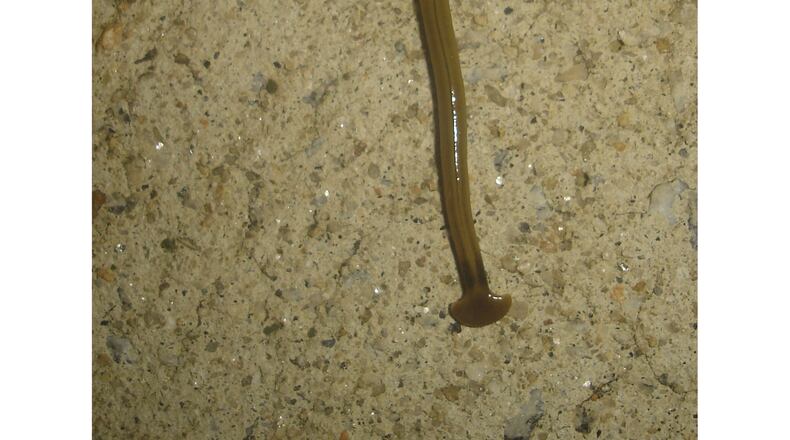Q: I have found several hammerhead worms on our patio, usually after a rain or under a pot. What is the easiest way to kill them? Jennifer Brown, Decatur
A: Hammerhead worms, Bipalium kewense, are an invasive species of planaria. They feed on earthworms, so they are considered a noxious pest that should be destroyed when discovered. Sprinkling salt on their body works well; so does picking it up with a stick and dropping it on a paper towel, where it will dehydrate. Don’t try to kill it by chopping it into pieces. Like most planaria, a hammerhead worm can grow a complete body from individual pieces. It normally drops sections of its tail into hospitable locations to increase the population.
Q: My school class grew maple seedlings from seed that we picked up under a maple tree growing nearby. Mine was growing great until I left it with my mother while I was out of town. I think she gave it too much water. Its leaves are drooping and it has lost a few. How can I revive it? Preston Burgess, Gwinnett County
A: Teach your mother that she (and all of us) have a digital moisture tester that is always available and easy to use. Your index finger works great to determine if a plant needs water. Just push it a little way into the soil under a plant then inspect the fingertip. If it is damp, the plant has enough water. If it is dry, the plant needs watering. If your seedling still has leaves, just put it in a sunny window and use your digit to test the soil every few days. With any luck, the tree roots will not suffer from a one-time drowning, and you will have a nice maple tree to eventually plant outdoors.
Q: Last year, I purchased and planted a Jungle Beauty daylily. When it bloomed this year, the blooms came from the base of the plant and had no stems. Do you know what has happened here? Gerri Dunne, email
A: Short stems for daylily flowers is a phenomenon caused by fluctuating high and low temperatures. We’ve had plenty of that this spring and summer. The daylily variety and the stage of growth it was in at flowering also play a part in this occurrence. The good news is that daylilies grow out of it. Treat your daylily normally and it will likely bloom as expected next year.
Email Walter at georgiagardener@yahoo.com. Listen to his occasional garden comments on “Green and Growing with Ashley Frasca” Saturday mornings on 95.5 WSB. Visit his website, www.walterreeves.com, or join his Facebook Page at bit.ly/georgiagardener, for his latest tips.
About the Author
Keep Reading
The Latest
Featured

